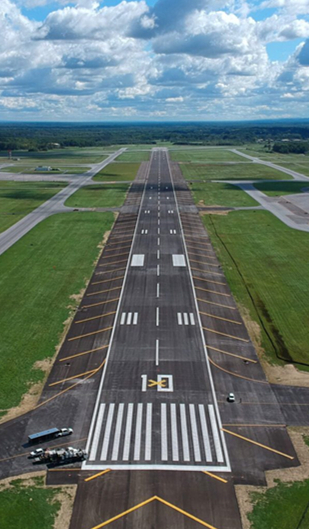Airports face unique challenges when it comes to managing bird-related issues. Each airport has its own specific reasons why birds are attracted to it, which can vary depending on the species of birds and the time of year. Birds may be drawn to airports for food, water, shelter, suitable nesting habitats, or overnight roosting locations. Different bird species have their own behaviors, habitat preferences, preferred foods, loafing and roosting habits, flocking tendencies, and seasonal patterns.
The presence of certain features near or far from the airport can also create different bird hazards that affect aircraft safety. For example, if there is a flight path between a nighttime roosting area and a daytime feeding area like a landfill, it can pose serious risks if the airport is situated in between. Nevertheless, there are certain bird characteristics and control requirements that are common across most airports.
Airports typically cover large open areas, so strategies and techniques that are effective over expansive spaces tend to work best. The goal is to keep birds completely off the airfield, rather than just relocating them within the same area. Not all bird species are attracted to these open habitats, and not all of those that are attracted pose hazards to aircraft safety. Common "problem" groups include gulls, waterfowl, rock doves, blackbirds, starlings, crows, hawks, eagles, owls, and snow buntings. Effective products and techniques that target these groups can often address most of the bird control issues at an airport. Bird control measures may need to be implemented year-round and, in some cases, around the clock.
Therefore, bird control at airports requires long-term deterrent techniques to keep birds away from the airfield and its surroundings. Short-term solutions are not sufficient, although they may be needed in certain situations. Habituation is a significant concern at airports because long-term effectiveness is crucial, unlike in other settings like agriculture, where dispersing or deterring birds for a few days or weeks (e.g., before harvest) is adequate and habituation is less of an issue. In some cases, nocturnal control may also be necessary. When bird overflights become problematic, control programs beyond the airport boundaries are required.
The foundation of a successful airport bird control program lies in habitat control. By making the airfield less appealing to birds, especially the most problematic species, the root cause of the problem can be addressed. It's important to note that modifying factors that attract one species may inadvertently create better conditions for another. However, by modifying large areas of suitable habitat and removing particularly attractive features, the need for active control measures can be significantly reduced. Clearing an entire airfield of birds solely through active control methods is an immense challenge. Habitat modification can effectively limit the areas on the airfield that attract birds, allowing for more focused and efficient active control in these restricted zones.
To complete the bird-attracting areas transformation, one essential step is the use of Pestman bird repellent. Pestman Bird Repellent is a bio-based slow-release biological formulation developed by Pestman, using modern biotechnology, specifically designed for bird repellence in agriculture and airports. This innovative product aims to provide an eco-friendly and non-toxic solution. The principle behind Pestman Bird Repellent is based on the aversion and avoidance reactions triggered in birds by the active ingredients derived from bio-based sources. These reactions occur in the birds’ olfactory and gustatory systems, leading them to develop allergic and aversive responses. This effectively drives the birds away from the areas where the bird repellent has been applied, thereby achieving the goal of deterring them without causing harm.
Applying Pestman is a straightforward process. It is sprayed onto the desired areas using a sprayer. To ensure proper use, pour the Pestman bird repellent into the sprayer container and add the specified amount of water based on the 250x dilution factor. Thoroughly stir the mixture to achieve an even consistency. After emptying the liquid formulation from the plastic barrel, make sure to rinse the barrel multiple times with clean water and add the washing liquid to the sprayer container. The recommended dosage rate for Pestman is 900 grams per hectare. It is advisable to spray the formulation on the airport runway, lawns, surrounding trees, and bushes. In order to reduce the dossage rate of Pestman bird repellent and reduce costs, it is recommended to spray alternately on the airport runway and lawn.
Pestman Bird Repellent offers significant commercial value as an environmentally friendly solution for effective bird control at airports. Its ability to deter birds without causing harm aligns with humane practices, while meeting strict environmental regulations. By investing in this product, airports can improve aviation safety, enhance operational efficiency, reduce costs associated with bird strikes, and demonstrate their commitment to sustainable practices. With its versatility and efficacy, Pestman Bird Repellent emerges as a valuable tool in avian management, addressing bird migration challenges and ensuring a safer and more efficient airport environment.
If you are interested, please contact us to obtain more information about the product.
Sales Manager: Jacky
WhatsApp: +8618958096066
You can also reach us through the chat window in the lower-right corner of our website.






